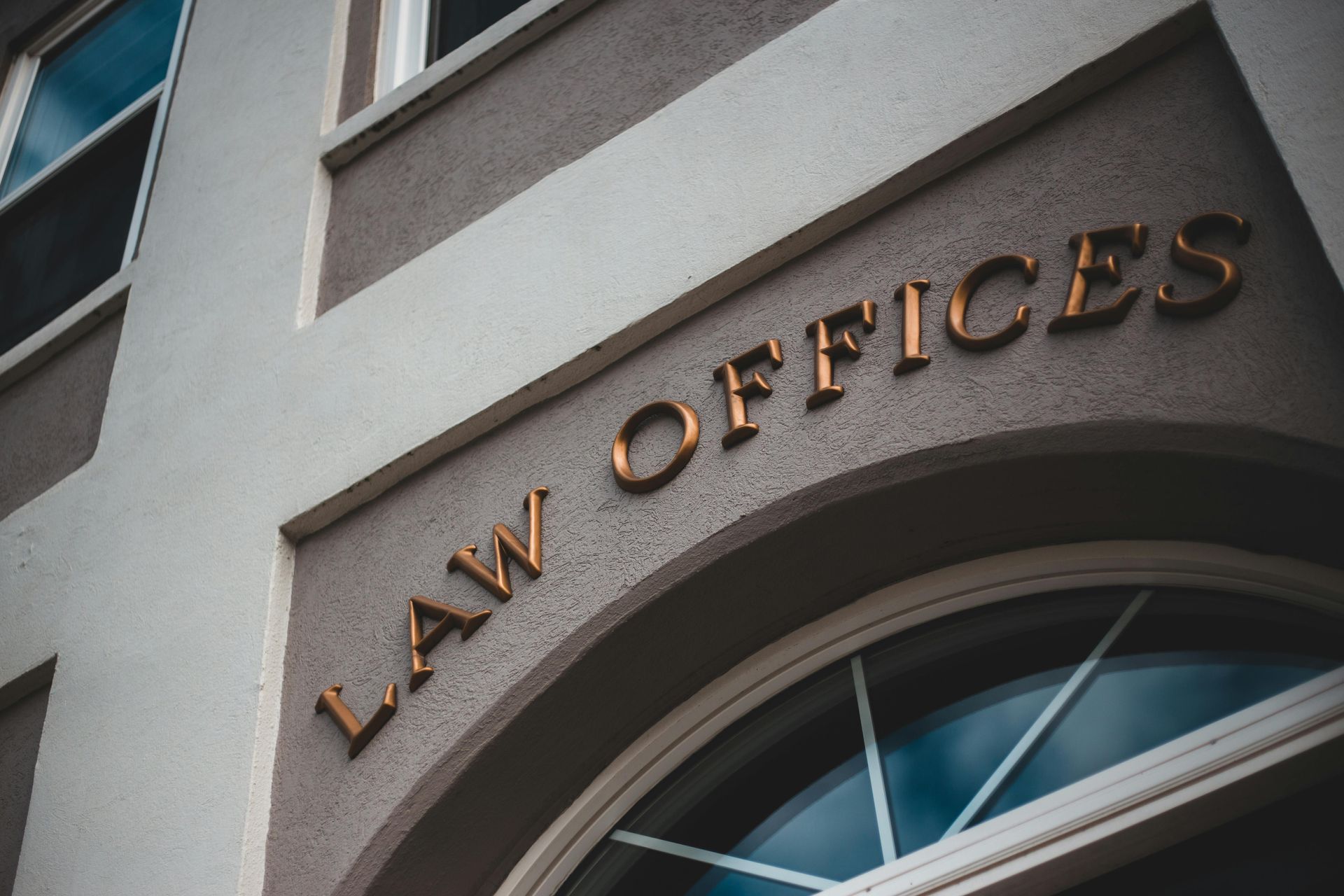A Comprehensive Overview of the Supplemental Register
ATTORNEYS IN DALLAS
Important considerations when navigating the two trademark registers including the option to request Supplemental Register registration before an ex parte appeal and the impact of registration on the Supplemental Register on future proceedings.
A Comprehensive Overview of the Supplemental Register
The Lanham Act establishes two trademark registers at the United States Patent & Trademark Office (USPTO): The Principle Register, and the Supplemental Register.
The need for the Supplemental Register arises when an Examining Attorney rejects an application on the grounds that the mark is merely descriptive of the applicant's goods or services. It is highly recommended that the applicant, in this situation, request registration on the Supplemental Register as an alternative to the Principal Register. To preserve the option of amending the application to the Supplemental Register, it is crucial for the applicant to request this amendment before an ex parte appeal is decided.
If available, the applicant can argue that the applied-for mark has acquired secondary meaning and should thus be registered on the Principal Register under Section 2(f) of the Trademark Act. Alternatively, as a backup, if it is determined that the proposed trademark has not acquired distinctiveness but can distinguish the identified goods or services, the applicant should argue for registration on the Supplemental Register. If the applicant fails to request this amendment in a timely manner, they will be prohibited from doing so on or after an appeal. This strategy allows the trademark applicant to pursue registration on the Principal Register during the appeal process while having a fallback position if the appeal is denied.
Only Trademarks In Use Can Appear On The Supplemental Register
Another important issue that may affect an applicant's filing date arises when seeking registration on the Supplemental Register with an intent-to-use application under Lanham Act §1(b). In such cases, the applicant can only seek to amend the application to the Supplemental Register after submitting an acceptable Allegation of Use or Statement of Use. It's worth noting that once the amendment to the Supplemental Register is made, the effective filing date of the trademark application becomes the date of filing the acceptable Allegation of Use or Statement of Use (rather than the original application filing date). This can significantly impact the applicant's first use date or constructive use date if those dates are of concern.
Supplemental Registration Is An Admission That Your Mark Is Merely Descriptive
By agreeing to registration on the Supplemental Register, an applicant implicitly acknowledges that, at the time of registration, the mark is merely descriptive of their goods or services. This presumption of mere descriptiveness can be challenged in the future. However, if an owner of a Supplemental Registration wants to assert a likelihood of confusion claim in an opposition or cancellation proceeding, they cannot rely solely on their registration as owners of a mark on the Principal Register would. Instead, they must prove that the mark has acquired secondary meaning before the adverse party's priority date. Interestingly, an Examining Attorney, on the other hand, will refuse a mark seeking registration on the Principal Register if it determines a likelihood of confusion with a mark on the Supplemental Register, even if the mark on the Supplemental Register cannot prove secondary meaning. Although this rule may seem contradictory, decisions by the Federal Circuit have supported it. The rationale behind allowing an Examiner to use a Supplemental Registration as a basis for refusal on grounds of likelihood of confusion (without a showing of secondary meaning) is simply one of the benefits of owning a trademark registration on the Supplemental Register.
- 66(a) Applications
- Abandoning a Trademark Application or Withdrawing a TTAB Proceeding
- Abandonment and Nonuse
- Abbreviations as Trademarks
- Accelerated Case Resolutions
- Acquired Secondary Trademark Meaning
- Amending Trademark Application
- Assigning a Trademark
- Assigning a Trademark and the Intent to Use Application
- Avoiding Fraud on Trademark Applications
- Avoiding Trademark Litigation
- Basis for Filing a Trademark
- Benefits of Registering a Trademark
- Bona Fide Intent to Use
- Celebrity Trademarks
- Challenging the Relatedness Factor
- Challenging Trademark Rights
- Claims in a Notice of Opposition
- Co-Existence Agreements
- Common Law Trademarks in the Internet Era
- Common Law Use and Priority
- Conflicting Marks
- Consent Agreements
- Constructive Use Priority
- Dates of Use
- Defenses in Opposition and Cancellation Proceedings
- Descriptive or Generic Trademarks
- Design Marks
- Design Trademarks
- Determining Trademark Similarities
- Discovery in TTAB Proceedings
- Dividing a Trademark Application
- Drawing Page
- Electronic Display Specimens for Trademarks
- Evidence in TTAB Proceedings
- Evidence of Acquired Distinctiveness
- Expediting Trademark Cancellation for Nonuse or Abandonment
- Extending Time to Oppose
- Factors of a Likelihood of Confusion Analysis
- False Suggestions of Connection
- Famous Trademarks and Likelihood of Confusion and Dilution
- Filing an Opposition or Cancellation Proceedings
- First Sale Doctrine
- Five Years of Use
- Foreign Trademark Rights
- Generic Trademarks
- Geographic Trademarks
- Hiring Trademark Counsel
- Immoral and Scandalous Trademarks
- Incontestability of U.S. Trademarks
- International Trademark Filings
- Joint Trademark Ownership
- Lawful Use of a Trademark in Commerce
- Likelihood of Confusion Analysis
- Likelihood of Confusion Refusal
- Merely Descriptive Trademarks
- Multiple Bases for a Trademark Application
- Overcoming and Ornamentation Trademark Refusal
- Personal Name Trademarks
- Principal and Supplemental Registers
- Protecting Single Creative Works
- Recording Trademark Assignments
- Refusal of a Trademark
- Refusing a Trade Dress Application
- Registering a Certification Trademark
- Registering a Service Mark
- Registering a Trademark That Lacks Inherent Distinctiveness
- Registering an International Trademark
- Relatedness of Goods or Services
- Request for Reconsideration in Trademark Office Action
- Requirements for International Trademark Application
- Revive an Abandoned Trademark Application
- Secondary Meaning
- Source Confusion
- Special Trademark Applications
- Standard Character and Special Format Marks
- Standing in Opposition and Cancellation Proceedings
- State Trademark Registration
- Statement of Use Extensions
- Tacking Doctrine
- Technical Trademark Use
- The Supplemental Register
- Trade Dress
- Trade Dress Application
- Trademark Application
- Trademark Clearance Searches
- Trademark Disclaimers
- Trademark Licensing
- Trademark of Authors, Performing Artists, and Characters
- Trademark Ownership
- Trademark Protection In Texas
- Trademark Settlements
- Trademark Specimens
- Trademark Specimens
- Trademark Use by Related Company
- Trademark Use in Advertising
- Trademark Use in Commerce
- Trademarking a Distinctive Mark
- Trademarking a Hashtag
- Trademarks for Musical Artists
- TTAB Discovery Rules
- TTAB Proceedings
- U.S. Service Mark
- U.S. Trade Dress
- Understanding Trade Channels
- Unitary U.S. Trademark
- Universal Symbols as Trademarks
- Using Secondary Sources
- What is an Ex Parte Appeal?
- Where to Register a Trademark
- Who Must File a Trademark?
Petition To Cancel Can Be Filed Against Marks On Supplemental Register
Lastly, it's important to note that a trademark application seeking registration on the Supplemental Register is not published for opposition. However, once it registers, a petition for cancellation can be filed against it. A petitioner for cancellation may raise the same grounds that would apply if the mark were registered on the Principal Register, except the "merely descriptive" ground of Section 2(e)(1) does not provide a basis for cancellation.
Contact an Experienced Trademark Attorney
If you need legal advice regarding your trademark rights, assistance with trademark prosecution, or representation in a domain name dispute, contact Wilson Whitaker Rynell. Our team of trademark lawyers has extensive experience in all aspects of trademark and copyright law, including the filing of trademark applications and representing clients in defense or prosecution before the Trademark Trial and Appeal Board.
CLIENT MATTERS
5,000+
YEARS OF SERVICE
25+
Award Winning
Recognized in the legal industry as dedicated board-certified lawyers and Rising Stars.
Expert Team
Your project will be handled by legal experts every time. You will have the most experienced attorneys working for you.
Quality Representation











